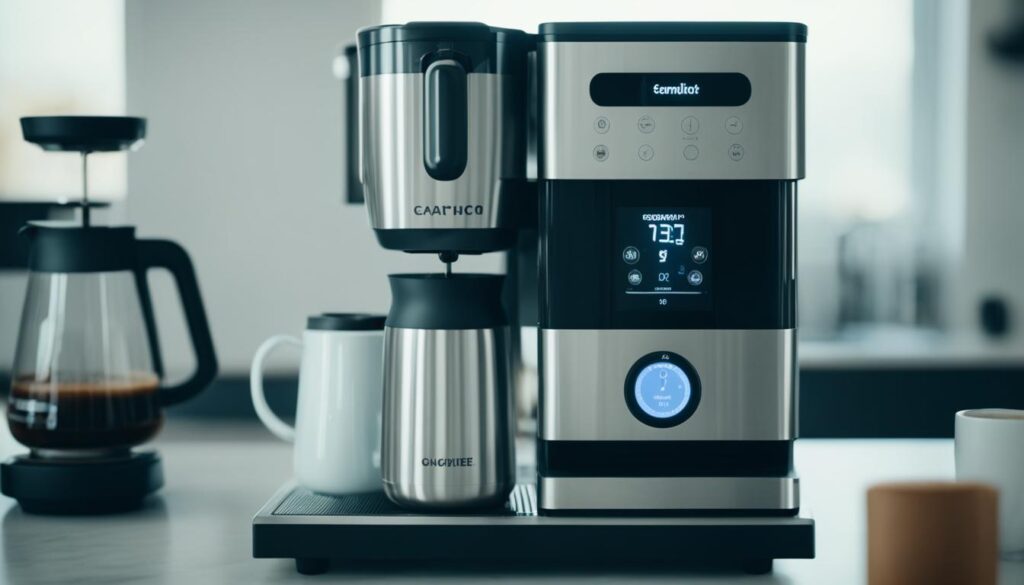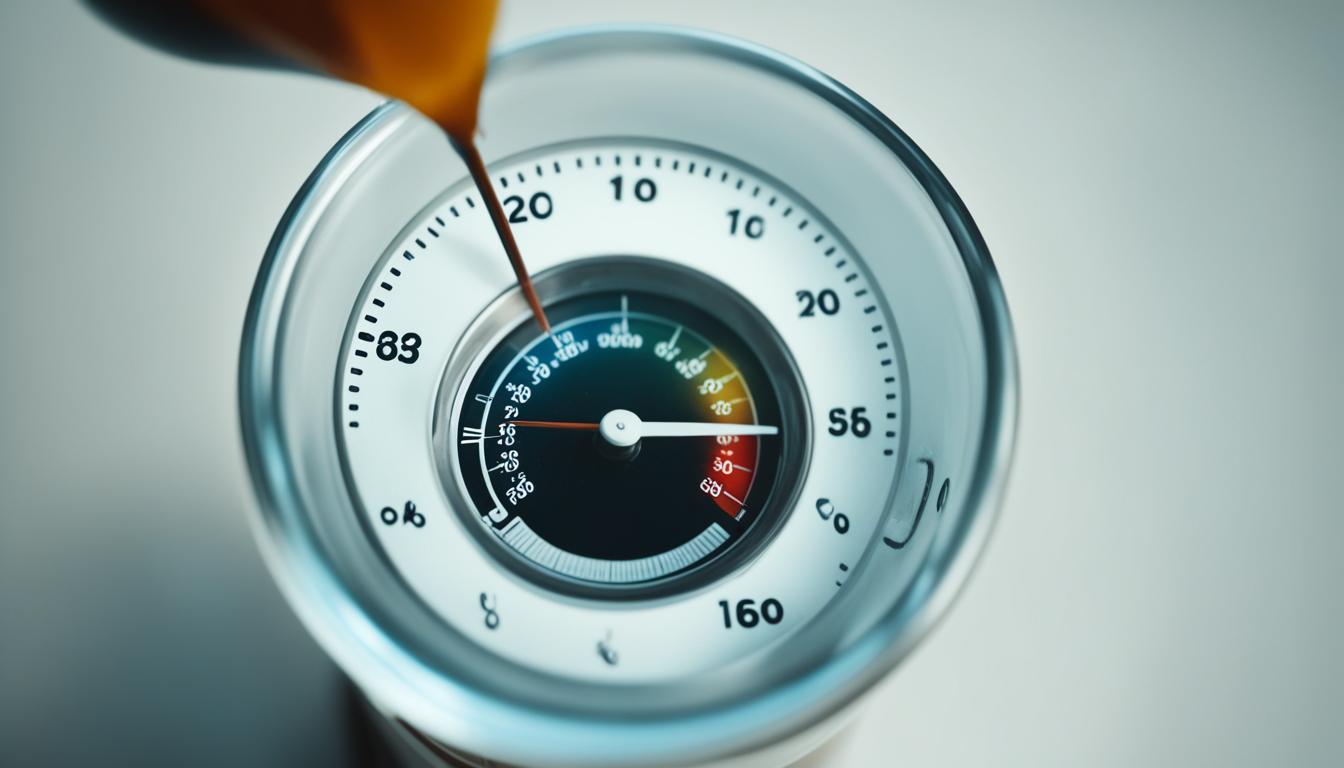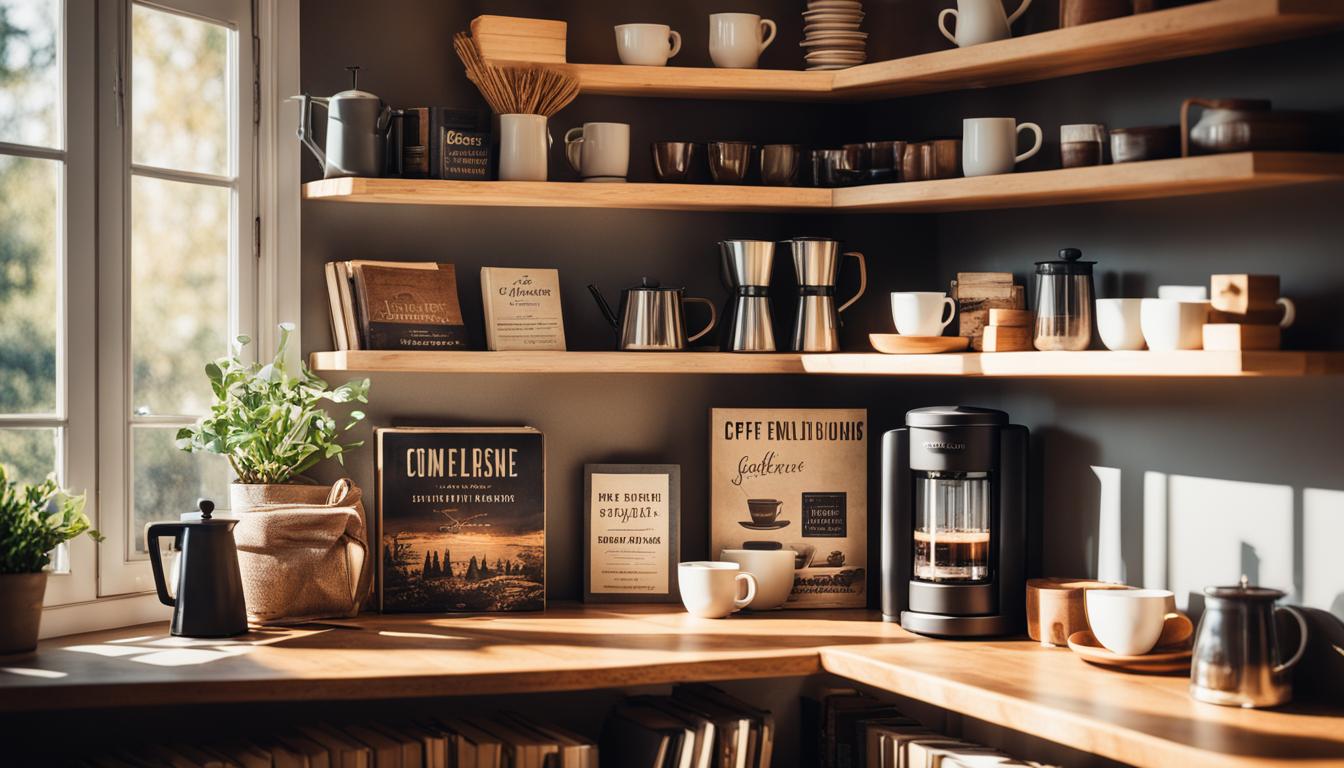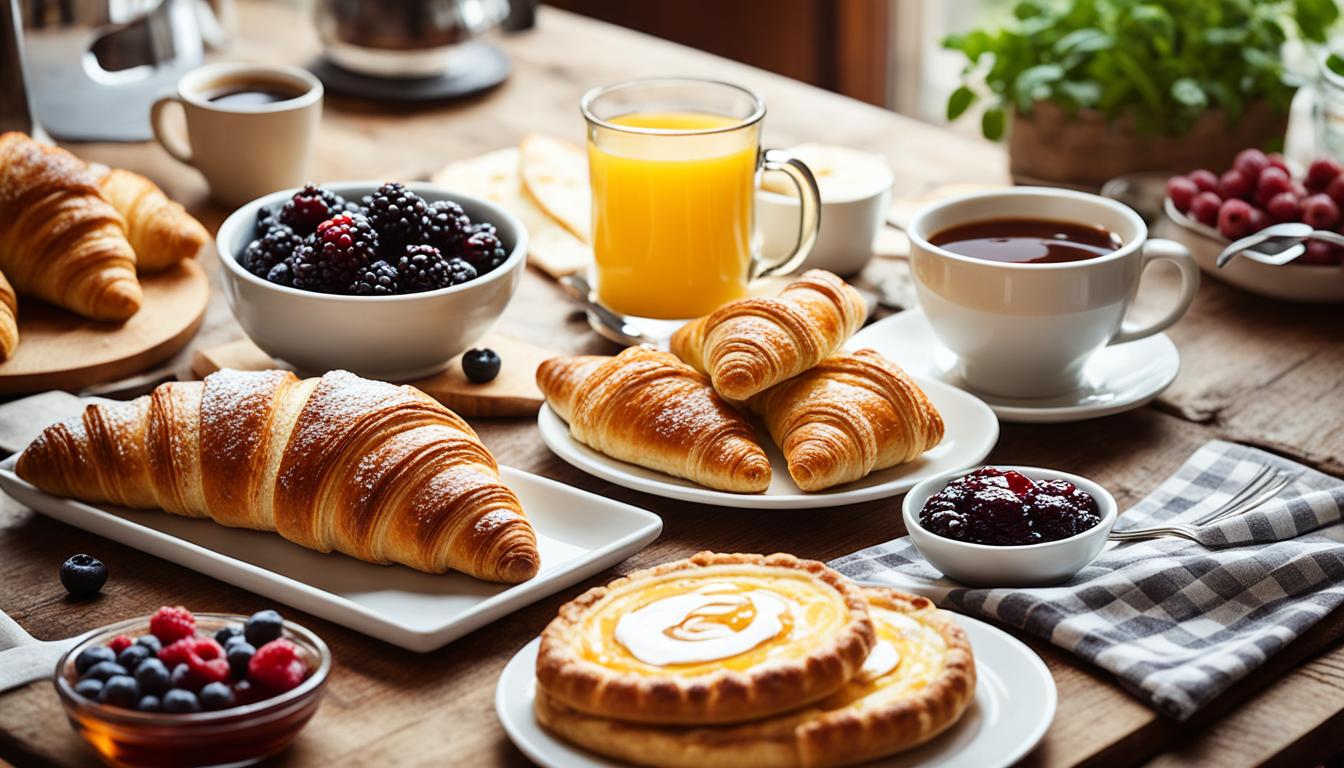Welcome to our guide on mastering temperature control in coffee brewing. If you’re passionate about coffee, then you know that the brewing process is a delicate art. Every variable, from the grind size to the water quality, plays a role in creating the perfect cup. Among these variables, temperature control stands out for its significant impact on the final flavor profile of your coffee. In this section, we will delve into the importance of temperature control in coffee brewing and explore the optimal brewing temperature for achieving the best results.
Key Takeaways:
- Temperature control is vital in coffee brewing, as it greatly affects the flavor profile.
- Optimal brewing temperature varies depending on the coffee brewing method.
- Water temperature plays a crucial role in extracting the desired flavors from the coffee grounds.
- Consistency in temperature throughout the brewing process leads to better results.
- Experimentation with different temperatures and brewing methods can help you find your perfect cup of coffee.
The Role of Water Temperature in Brewing
Water temperature is a critical factor that can greatly influence the quality and taste of your coffee. Getting the water temperature right is essential for achieving the perfect brew, as it can significantly impact the flavor and extraction process.
For a truly exceptional cup of coffee, it is important to understand the optimal water temperature for different brewing methods. Let’s take a look at some popular brewing methods and the recommended water temperatures:
| Brewing Method | Recommended Water Temperature |
|---|---|
| Drip or Pour-over | 195-205°F (90-96°C) |
| French Press | 195-205°F (90-96°C) |
| Espresso | 195-205°F (90-96°C) |
| Cold Brew | 68-72°F (20-22°C) |
These temperatures are considered optimal because they allow for proper extraction of flavors from the coffee grounds. Brew temperatures below the recommended range can lead to under-extraction, resulting in a weak and flat-tasting coffee. On the other hand, temperatures above the range can over-extract the coffee, leading to bitter and burnt flavors.
To ensure consistency in your coffee brewing, it is essential to measure the water temperature accurately. Using a reliable thermometer can help you achieve the desired temperature with precision. Additionally, preheating your brewing equipment can also contribute to maintaining the water temperature throughout the brewing process.
Remember, experimenting with water temperature can be a fun and rewarding journey. Don’t be afraid to adjust the temperature within the recommended range to discover the flavor profiles that suit your taste preferences.
Now that we understand the importance of water temperature in brewing, let’s explore some practical tips and techniques to achieve precise temperature control in your coffee brewing process.
Tips for Achieving Temperature Control in Brewing
When it comes to brewing the perfect cup of coffee, temperature control is key. Achieving precise water temperature is essential to bring out the flavors and aromas locked within the coffee beans. In this section, we will share practical tips and techniques to help you achieve optimal temperature control in your coffee brewing process, ensuring a consistently great cup of coffee every time.
Method for Measuring Water Temperature
Before we dive into the tips, let’s start by discussing the best method for measuring water temperature. Using a reliable digital thermometer is highly recommended, as it provides accurate readings. Avoid relying solely on the built-in temperature gauge of your coffee maker, as they are often not as precise.
To measure the water temperature, simply insert the thermometer into the water as it heats. Make sure to position it away from the water surface and close to the middle to obtain an accurate reading.
Tips for Precise Water Temperature
Now that we’ve covered the measuring technique, let’s explore some tips for achieving precise water temperature:
- Pre-heat your equipment: To ensure consistent water temperature throughout the brewing process, pre-heat your coffee maker, kettle, or French press. This will minimize temperature loss and help maintain the desired brewing temperature.
- Boil then wait: When using a kettle to heat water, bring it to a full boil, then let it sit for about 30 seconds to 1 minute. This wait time allows the water temperature to stabilize and reach the optimal range for brewing.
- Adjust for brewing method: Different brewing methods require different water temperatures. As a general guideline, aim for a temperature range of 195-205°F (90-96°C) for drip coffee and pour-over methods. However, for French press or cold brew, a slightly lower temperature of around 190-200°F (88-93°C) is recommended.
Strategies for Temperature Consistency
Temperature consistency is crucial to ensure even extraction and balanced flavors in your coffee. Here are some strategies to maintain temperature consistency:
- Stainless steel thermal carafe: If you brew coffee in a drip machine, consider using a stainless steel thermal carafe instead of a glass carafe with a hot plate. A thermal carafe will help keep your brewed coffee at a consistent temperature without the risk of overheating.
- Brew in small batches: If you’re brewing a large batch of coffee, the brew time may be longer, resulting in temperature loss. Instead, consider brewing in smaller batches for better temperature consistency.
- Pre-warm your coffee mug: Before pouring your freshly brewed coffee, pre-warm your coffee mug or cup with hot water. This will help maintain the temperature of your coffee for a longer period.
By implementing these brewing temperature tips and focusing on precise water temperature, you’ll elevate your coffee brewing game and unlock the full potential of your favorite beans. Don’t be afraid to experiment with different temperatures and brewing methods to find the perfect balance for your taste buds.

Temperature Control in Espresso Making
Espresso brewing is an art that requires meticulous attention to detail, and temperature control is a critical element in achieving the perfect balance of flavors. The right temperature can enhance the sweetness, acidity, and body of the espresso, resulting in a truly exceptional cup of coffee.
When it comes to temperature control in espresso making, there are several key considerations that baristas and coffee enthusiasts should keep in mind:
- Selecting the Right Machine: Investing in a high-quality espresso machine with precise temperature control capabilities is essential. Look for machines that offer temperature stability and allow you to adjust the brewing temperature according to your preferences.
- Preheating the Equipment: Preheating your espresso machine and portafilter helps to ensure a consistent temperature throughout the brewing process. This step helps to maintain the optimal temperature needed for extracting the full flavor potential of the coffee.
- Monitoring and Adjusting: Regularly monitoring the temperature during the brewing process is crucial. Espresso machines with temperature displays or thermometers can assist in achieving accuracy. Adjust the temperature as needed to achieve the desired flavor profile.
- Tampering Technique: Properly tamping the coffee grounds ensures even water distribution and helps to maintain a consistent temperature during extraction. Remember to apply the correct amount of pressure and distribute the coffee evenly in the portafilter.
- Timing Matters: Brewing time plays a role in temperature control as well. Generally, a longer extraction time can lead to a higher temperature, which may result in a more bitter taste. It is crucial to find the right balance between brewing time and temperature to achieve the desired flavor profile.
To illustrate the importance of temperature control in espresso making, consider the following comparison:
| Scenario | Temperature Control | Result |
|---|---|---|
| Scenario 1 | Insufficient temperature control | The espresso tastes weak and lacks depth, with under-extraction leading to a sour or underdeveloped flavor. |
| Scenario 2 | Optimal temperature control | The espresso exhibits balanced flavors, with the right level of acidity, sweetness, and body, resulting in a delightful and satisfying cup of coffee. |
| Scenario 3 | Excessive temperature control | The espresso becomes bitter and overly extracted, with a burnt taste that masks the nuances of the coffee’s natural flavors. |
By mastering temperature control in espresso making, you can unlock the true potential of your beans and create exceptional espresso shots that showcase the complexity and richness of the coffee. Experimenting with different temperatures and techniques will allow you to customize your espresso to suit your taste preferences.
“Temperature control in espresso making is a fine balancing act that can make all the difference in the flavor profile of your coffee.”
Conclusion
In conclusion, mastering temperature control in coffee brewing is crucial for unlocking a world of rich flavors and consistently delicious cups of coffee. The role of water temperature in the brewing process cannot be overstated, as it directly impacts the overall flavor profile of the coffee.
By understanding the importance of water temperature and implementing brewing temperature tips, you can elevate your coffee brewing to new heights. Whether you’re using a French press, pour-over method, or espresso machine, achieving precise and consistent water temperature is essential for extracting the desired flavors from your coffee grounds.
Remember, experimentation is key. Don’t be afraid to explore different temperatures and brewing methods to find your perfect cup of coffee. With practice and attention to temperature control, you can become the master of your coffee brewing craft. So go ahead, grab your favorite coffee beans, dial in that water temperature, and savor the delicious results. Cheers to a great cup of coffee!
FAQ
Why is temperature control important in coffee brewing?
Temperature control is vital in coffee brewing because it directly affects the extraction of flavors from the coffee grounds. The optimal brewing temperature allows for the proper extraction of desirable compounds, resulting in a flavorful and well-balanced cup of coffee.
What is the optimal water temperature for brewing coffee?
The optimal water temperature for brewing coffee is between 195°F and 205°F (90°C to 96°C). This temperature range enables proper extraction of coffee flavors without over-extraction or under-extraction.
How does water temperature impact the flavor of coffee?
Water temperature plays a crucial role in the extraction process. If the water is too hot, it can over-extract the coffee, resulting in a bitter and unpleasant taste. On the other hand, if the water is too cold, it can under-extract the coffee, leading to a weak and lackluster flavor profile.
What are some tips for achieving temperature control in coffee brewing?
To achieve temperature control in coffee brewing, you can start by using a reliable coffee kettle with a built-in temperature control feature. Additionally, preheating your brewing equipment, such as the coffee brewer or French press, can help maintain the desired temperature throughout the brew. Using a thermometer or a temperature-controlled coffee machine can also ensure accurate and consistent water temperature.
How important is precise water temperature for brewing coffee?
Precise water temperature is essential for brewing coffee because it directly impacts the extraction process. To achieve the desired flavors and balance, it is crucial to have accurate water temperature that falls within the recommended brewing range for the particular coffee brewing method.
Why is temperature consistency important in coffee brewing?
Temperature consistency is important in coffee brewing to ensure consistent flavor extraction. Fluctuations in water temperature can lead to inconsistent extraction, resulting in a varied flavor profile from one cup of coffee to another. By maintaining a consistent water temperature throughout the brewing process, you can achieve reliable and repeatable results.
How can I achieve temperature control in espresso making?
Achieving temperature control in espresso making involves several key steps. Firstly, you need to ensure that your espresso machine is properly calibrated and able to maintain the desired brew temperature. Secondly, preheating the espresso machine, portafilter, and cups can help maintain the temperature during the brewing process. Finally, monitoring and adjusting the water temperature throughout the extraction can help achieve optimal espresso flavor.




